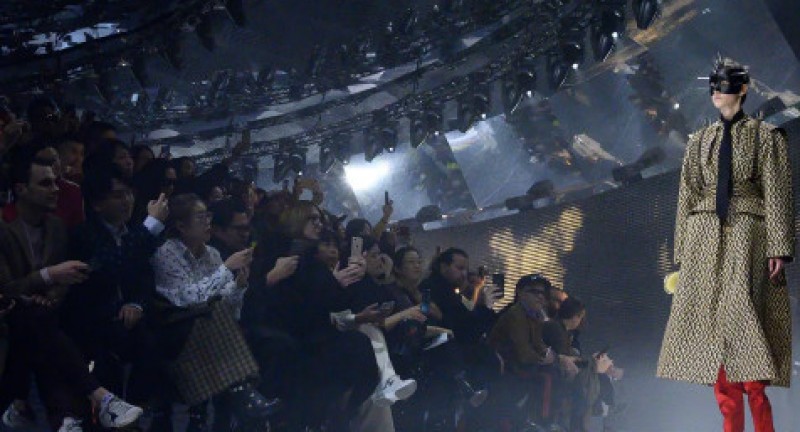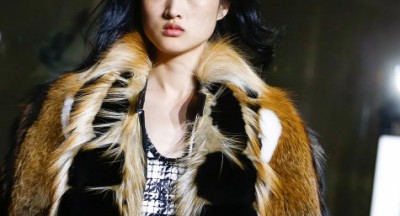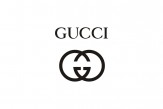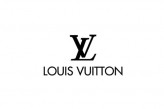Gucci

It’s quite certain that when Guccio Gucci started out, he never dreamed that his small luggage company would grow to one carrying such cultural significance. But since Gucci was founded in Florence in 1921, the company has built a catalog of genuinely iconic trademarks. The interlocking GG logo; the bar-and-bit belt buckle; the bamboo-handle handbag; the omnipresent loafer—all of them have helped the brand penetrate mainstream culture like no other Italian label in history. The groundwork for the company’s epic expansion was laid under the leadership of Guccio’s eldest son, Aldo. A flamboyant businessman, he transformed the business into the accessories destination of choice for Europe’s emerging jet set. By the end of the 1960s, everyone from Queen Elizabeth II to Elizabeth Taylor was a patron. In keeping with the father-son tradition, Aldo’s son Paolo ushered in Gucci’s next great era, in the late 1960s, with the introduction of clothing. By the early ’70s, the lean silhouettes, fur-lined coats, and shiny satin lapels we think of today as Gucci hallmarks began to appear. The popularity of the brand was both a blessing and a curse. By the early ’80s, overzealous licensing had tarnished the label’s identity. Meanwhile, vicious infighting led to the Gucci family ultimately losing control of the company in 1993. Paolo’s legacy became the basis upon which a young designer named Tom Ford decided to build his vision when he became creative director in 1994. The now infamous Tom Ford look—what he later called “sexy, sensual, fuck-me clothes”—oozed power and prestige and reminded customers viscerally of the company’s glory days. In short order, Gucci was a global player once again. The French holding company now called Kering, which had owned a portion of the label since 1999, took managerial control in 2004, to Ford’s extreme chagrin—and he departed, leaving the brand with a very big pair of alligator loafers to fill. Ford had taken the company from virtual bankruptcy to a value of $4.3 billion. Enter the relatively unassuming Frida Giannini, an accessories designer: She had been part of the Gucci design stable for nearly five years when she was awarded the top spot, overseeing menswear, womenswear, and accessories in 2006. Her roughly 10-year reign was marked by diminishing returns, and her onetime underling Alessandro Michele in turn replaced her in 2015. The reversal of Gucci’s fortunes has been nothing short of staggering.
Alessandro Michele’s line of reasoning has never been linear. The collections he creates are prismatic affairs, as visually diverse as they are infused by meanings sometimes impervious to easy deciphering. His fascination for layered references and his love of history make him a collector of objects and memories, an archivist of galaxies of images. Not surprisingly, he called his resort collection Cosmogonies.
At Gucci, Michele has brought his collections to places of esoteric, disquieting charm—the Promenade des Alycamps in Arles, an ancient necropolis, or Rome’s Musei Capitolini overlooking the Fori Imperiali, where archeological remains give off vibes of splendor and decay. But as far as magical thinking goes, Castel del Monte, where he choose to show his resort, surely upstages his previous settings. A majestic fortress in the shape of an octagonal turreted crown smack in the middle of Puglia’s flat countryside, it was built around the thirteenth century by the emperor Frederick II, a maverick monarch—poet, polyglot, mathematician, and magician—who presided over a sophisticated multicultural court of astronomers, artists, and warriors. In the castle’s construction, the number eight was obsessively repeated as an arcane bearer of meaning. It goes without saying that Michele was drawn to the genius loci of this rather extraordinary setting.
“I was looking for a place which gave grace to the mythological,” he explained. “It’s a site where measurements and proportions cross each other as if by magic—the same way measurements of collars and jackets can be somehow magical.” For Michele, the mystery of Castel del Monte resonates with the enigmatic genesis of his creativity, “which operates through the need of putting together constellations of signs and symbols.”
Michele’s collections seem to be part of a complex, well orchestrated flux of consciousness, gelled into attractive visual dénouements. While widely Instagram-compelling and immediate, they’re often substantiated by high-falutin, erudite citations. The idea of “cosmogonies of constellations” was born after a reading of German philosopher Hannah Arendt’s essay on Walter Benjamin, whose library was confiscated by the Gestapo, leaving him unable to access to the eclectic network of other people’s thoughts that nurtured his entire oeuvre.Michele has often built on the tension and vitality of the past to write his own version of the present. “Clothes are mediums, strata of languages,” he said. “Today, ‘making fashion’ doesn’t mean just being a tailor, or chronicling just a one-dimensional narration. Putting together a collection has to do with talking about your idea of the world, because fashion is deeply connected to life and to humanity. Fashion isn’t just a hieroglyph that only élites can understand. It’s about life, it speaks a multitude of idioms, it’s like a huge choir from which nobody has to be excluded. It’s like being at sea, in the ocean, and casting out someone or something is not being fair to the complexity of life.
Michele’s journey this season manifested in a show intended “as a rave,” he explained, where his skills as a costume designer were boosted by the theatricality exuded by the location. “I thought the castle shouldn’t be kept shrouded in silence, but had to be lived and celebrated as it probably was when it was built, a sort of California, the Silicon Valley of the time.” Under a serendipitous full moon, his constellation of characters paraded around the fortress, lit by projections of stars and galaxies. While the idea of cosmogony was only tangentially translated into actual shapes or decorations, the designer’s recurrent theme of metamorphosis was hinted at through unobtrusive prosthetic insertions in some dresses (“dresses which become bodies, and bodies becoming dresses”), and also by an unrelenting, flowing panoply of divergences.
Chatelaines and go-go girls, demure bourgeois ladies and spectacular nocturnal creatures, long-limbed lovers of bondage sheathed in thigh-high, laced-up stiletto-boots and romantic heroïnes swathed in yards of velvet—it was a feast of coherent discordances, tied together by historical references (portrait collars, plissé gorgets, crusaders’ capes, trains, and medieval crinolines) and by the “incendiary shimmer,” as he called it, of luminous textures under the light. “Women have often worn constellations on their bodies,” Michele said in a sort of conceptual pirouette. “Just think of Marilyn Monroe’s famous last dress studded with crystals; she looked like the beautiful tail of an impalpable comet.” What comes around goes around, but no one performs past-to-present magic quite like Michele.

To see more our products : https://id2011890343sv.hutechstudents.com/full-set










Ý kiến bạn đọc